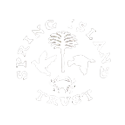Processes that Protect the Island
An Effective Master Plan
A list of key elements for the Master Plan informed how Spring Island’s unique sense of place would be protected as its modern development began. The list included:
-
The rural/farm setting
-
The “Emerald Necklace” – a 50′ nature curtain along Spring Island Drive to resemble a nature park (the roadside landscape/habitat would be managed, not manicured)
-
Country lanes — narrow “farm to market” roads to maintain the rural flavor and prevent speeding
-
Roadside vistas — short, medium and long views
-
Cultivated and fallow fields — dictated by a plan to provide a sense of history
-
Walker Landing — a small river community with buildings that looked like they had evolved over generations
-
Trails connecting all home sites with the three major “watering holes” (Walker Landing, Old Tabby Links, Bonny Shore Landing)
-
Informal architecture — a low country vernacular for public buildings and homes
-
Nature park, rustic signage
-
Landscaping — the use of native plants on home sites and in public spaces
Since Spring Island was to be a residential community located within a nature park, an early question in the master planning process was whether or not to build a golf course. Market research concluded that having golf, tennis and other amenities would broaden the market and mitigate the risk of developing a community that was solely nature-focused. The network of hunting fields created by the Walkers provided an excellent template for the location of the golf course. Designers Arnold Palmer and Ed Seay were able to place 18 holes on the landscape with minimal soil excavation and tree loss.
Spring Island’s Master Plan was intended to provide the best of both worlds: privacy and social engagement. Three “watering holes” — Walker Landing, Old Tabby Links and Bonny Shore Landing — would encourage residents from all over the Island to come together. A mailroom at the River House, rather than individual mailboxes along the road, is an illustration of this strategy.
Creation of an Environmental Steward: Formation of the Spring Island Trust
Betsy Chaffin proposed a model to protect the environmental integrity of the Island.
Nature in the Master Plan
The Master Plan called for covenants that required native vegetation between home sites, along roadsides and at marsh edges.
Stewardship of these native vegetation buffers, called “nature curtains,” was assigned to the Habitat Review Board (HRB).
The Master Plan also considered nature as an important part of Old Tabby Links golf course. By using the old quail fields as a template, the fairways were blended into Spring Island’s natural landscape. Trees that had been hanging over an old field were now artfully draped over the edge of a fairway. The island in the pond on the 16th fairway was designed to attract nesting herons and egrets. Golf course pond edges were sculpted to have littoral shelves for aquatic blooming plants such as pickerelweed and canna lily.
Spring Island Drive was designed to provide a nature experience. Roadside management began in the 1990s with a landscape plan for Bridge Road and “mosaic mowing” from Bridge Road to Walker Landing. Though it has evolved since then, the goal is still to provide a diversity of views with meandering lines and elements of discovery while traveling along Spring Island Drive. Shady forest “tunnels” created by allowing trees and shrubs to grow close to the road edge separate bright expanses of open fields. A combination of short, medium and long views provides ever-changing nature visuals.

Copyright © Spring Island Trust
40 Mobley Oaks Ln. · Okatie, SC 29909 · 843-987-7008
Site by Sans Sheriff Studio
